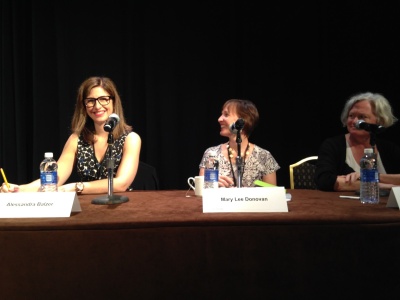As a person who abhors censorship and supports free thought and expression in all forms, Banned Book Week is one of my top favorite holidays. This is the time of year when we highlight those books that may terrify a small percentage of the population because of what they fear may happen if the information held within their pages is shared.
The horror! Run for the hills! Grab your pitchforks and torches! We must destroy what we don’t understand!
I obviously disagree. Knowledge isn’t inherently bad or good, it all depends on how you use it.
I’ll be celebrating this fantabulous holiday in a few ways, first by listening to a free audio version of Kurt Vonnegut’s SLAUGHTERHOUSE FIVE, read by the author himself. I actually read it the first time when I was in high school. My dad had it lying around, probably found it falling out of an overstuffed bookcase, and the title or cover must’ve appealed to me. I don’t remember much except the last line of the book. If you’ve ever read it, I’m sure you know why. (I actually remember peeking ahead to see if it really ended like it said it did. I’m sure I’m not the only one.) I look forward to rediscovering this story, again. Listening to the tale in Vonnegut’s own voice will be an extra treat.
Learn more about Kurt Vonnegut here.
For the second way of celebrating, I turn to the American Library Association, who just released the yearly list of top ten frequently challenged books with the CAPTAIN UNDERPANTS (series) by Dav Pilkey in the number one spot. Reasons? Offensive language, unsuited for age group. Now, I’m pretty sure there are no curse words in CAPTAIN UNDERPANTS, so what could this offensive language be? And unsuited for age group? I can’t think of anyone that would be more suited to read a story about a superhero named Captain Underpants than kids. Who do they think would be more suitable? Adults?
What are they talking about? Someone please explain this insanity.
 Here’s the book synopsis from the author’s website:
Here’s the book synopsis from the author’s website:
Meet George and Harold, a couple of wise guys. The only thing they enjoy more than playing practical jokes is creating their own comic books. Together they have created the greatest comic-book superhero in the history of their elementary school – CAPTAIN UNDERPANTS! But George and Harold’s principal, mean old Mr. Krupp, doesn’t like their pranks OR their comic books. He’s cooked up a plan to catch George and Harold and stop their shenanigans – once and for all! This book is about what happened when that plan backfired, and Captain Underpants leaped off the page to save the day!
And here’s the story behind the story from the author’s website:
This book is based on a superhero that Dav Pilkey invented way back in 1973 when he was a second-grader. The comics that Dav made were very much like the comic book that George and Harold sell on the playground in Chapter 3.
When I began making children’s books in 1986, my goal was to one day make a book about Captain Underpants. I wrote several different versions of this story, including a 48-page comic book, but every publisher who saw it turned it down. When the book was finally accepted in 1996, it was a real dream come true! — Dav Pilkey
Many of the things in the book are taken directly from Dav’s childhood: the practical jokes, the comics, even the cheesy animation technique called “Flip-O-Rama” (Dav and his friends used to amuse themselves by making these flip-action animated pictures in elementary school).
Dav Pilkey had dyslexia when he was a kid. He was always discouraged by wordy texts, small type, and lengthy chapters.
My goal with The Adventures of Captain Underpants was to make a chapter book that SEEMED like a picture book. So I wrote incredibly short chapters and tried to fill each page with more pictures than words. I wanted to create a book that kids who don’t like to read would want to read. — Dav Pilkey
Nope. Just not seeing anything diabolical mob violence-worthy there. Guess I will take a chance and actually READ THE BOOK before passing judgment. Yes, in solidarity of Mon Capitan el de Underpants, I shall  read the first book of this series, and maybe even while in my underpants. Cape optional.
read the first book of this series, and maybe even while in my underpants. Cape optional.
Learn more about Dav Pilkey here.
HAPPY BANNED BOOK WEEK, EVERYONE!
What are you reading to celebrate?














